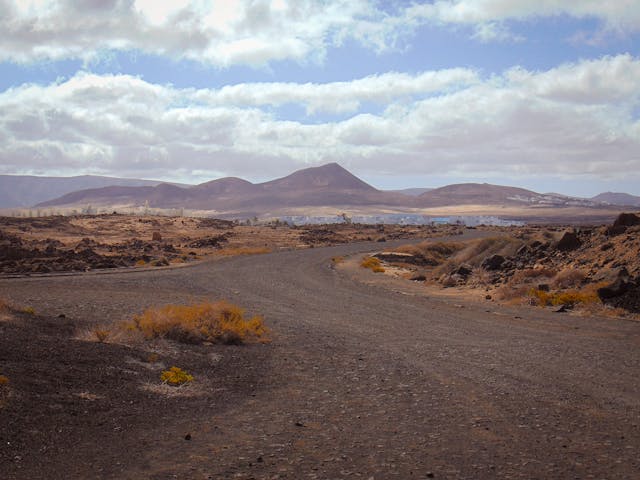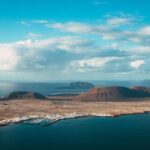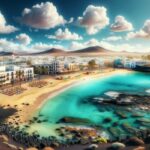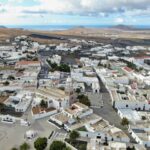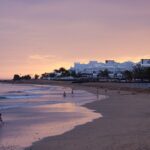Getting to know the Lanzarote volcano is a unique experience for all visitors. The volcanic origins are reflected in every corner, and in the daily life of the island. Its dramatic landscapes, otherworldly rock formations, and unique ecosystems are a testament to its fiery past. We invite you to explore the singularities that await you at your arrival!
Geological History of Lanzarote
Being able to explore the volcanic formations of Lanzarote is one of the reasons that attract visitors to the island. The history of Lanzarote is linked to volcanoes, and its geologic past is a testament to the immense power of nature, shaping a landscape of stark beauty and otherworldly charm.
Formation of Lanzarote’s Volcanoes
The island of Lanzarote, like the rest of the Canary archipelago, is the result of volcanic activity, and its origin dates back to about 15 million years ago. The eruptions of an underwater volcano formed the island. Over time, more eruptions, both underwater and on land, further shaped the island’s contours, creating the diverse volcanic landscape that we know today.
The landscape of Lanzarote is marked by volcanoes. The Ajaches and the Famara Massif are the oldest. And the last to form were Tao, Tiguantón and Volcán Nuevo. These three are in the Timanfaya National Park and appeared with the 1824 eruption.
Major Eruptions in History
Lanzarote’s volcanic history is marked by periods of intense activity, with the most recent major eruptions occurring between 1730 and 1736, and again in 1824. These eruptions left a significant impact on the island’s landscape, forming vast lava fields, towering volcanoes, and rock formations.
Timanfaya National Park was formed with an eruption that lasted six years. In total 33 volcanoes were formed throughout the island. Another large eruption occurred in 1824, at the north of the island, resulting in the creation of three new volcanoes.
Volcanic activity on the island has not ceased, Timanfaya is still active, but it is difficult to predict when the Lanzarote volcanoes will erupt. That is why authorities are closely monitoring signs of a possible eruption.
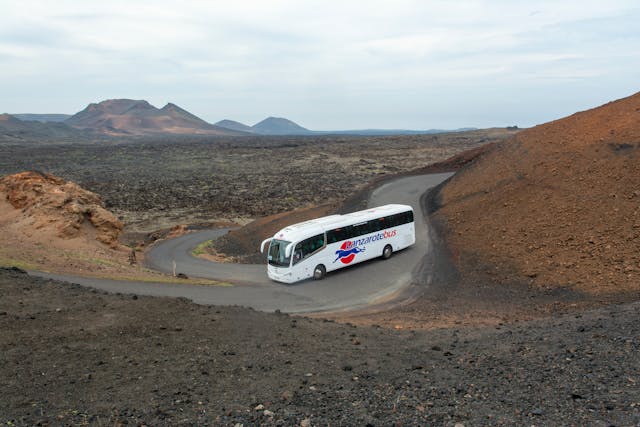
Visiting Lanzarote’s Volcanoes
Visiting Lanzarote’s volcanic wonders offer an unforgettable experience for those seeking to explore the island’s fiery past. The Timanfaya National Park occupies about a quarter of the island. This is one of the places you should visit if you are interested in volcanic tourism.
But thanks to the geological history of the island there are many other places and formations related to volcanoes such as Los Hervideros, the Cueva de los Verdes, the Volcano and the malpaís of La Corona, among many others.
Best Time to Visit
Lanzarote enjoys a warm, sunny climate all year-round, making it an ideal destination for a volcanic adventure. However, the best time to visit depends on your preferences. If you are looking for milder temperatures and fewer crowds, consider the month between March and May, or between September and November.
If you don’t mind about the crowds of the peak season, you can go on summer (June-August). This period offers long daylight hours and lively festivals.
Top Activities and Tours
Exploring Lanzarote’s volcanoes offers many activities and tours to suit every interest, and for the whole family. Once on the island you can visit the pristine beaches, exploring the towns and it particularly architecture, enjoying the natural marvels of the island or exploring unusual things to do,
Here are some ideas of activities to do in Lanzarote:
- Trekking: Embark on guided hikes through volcanic landscapes, discovering lava tunnels, craters, and panoramic views.
- Camel Rides: Experience the unique sensation of traversing Timanfaya National Park on a camel’s back.
- Timanfaya National Park Tours: Join guided bus tours through the park, witnessing geothermal demonstrations, exploring volcanic sites, and enjoying traditional cuisine cooked using geothermal heat.
- Cueva de los Verdes: It is part of the same volcanic tunnel in which the Jameos del Agua is located and which was formed after the eruption of the La Corona volcano. In the past, it served as a refuge for Lanzarote residents to protected themselves from pirate attacks.
- Jameos del Agua: Explore an underground lava tube transformed into a mesmerizing natural amphitheatre, where you can witness an enchanting sound and light show.
- César Manrique´s Tour: The legacy of this Lanzarote artist and architect can be seen throughout the island. His work includes the intervention in Jameos del Agua, the Cactus Garden, the Casa Museo del Campesino, Mirador del Río, among others.
Cultural and Environmental Impact
Influence on Local Culture
Lanzarote’s volcanic landscape has shaped the island’s culture and traditions. The volcanic soil, once considered barren, has been ingeniously cultivated using volcanic ash, fostering a resilient agricultural industry.
The best example of this is La Geria and its unique cultivation system, which has allowed it to produce the emblematic Lanzarote wine.
Local architecture also reflects a deep understanding of the volcanic environment, with traditional white houses built using volcanic rock to stay cool and blend into the surroundings. But the volcanic heritage is not limited to this and has inspired local art, music and festivals.
Conservation Efforts
The preservation of Lanzarote’s unique volcanic environment is a priority and sustainable practices are encouraged. The authorities seek to preserve the landscape, as well as the flora and fauna that have adapted to the characteristics of the island.
Responsible tourism initiatives aim to minimize environmental impact, and educate visitors on the importance of protecting this volcanic wonderland.
Practical Information for Tourists
Getting There and Around
It is possible to get to Lanzarote by plane from the main cities in Europe, or by ferry. When you arrive at the island, you can rent a car or use public transport, but we recommend you book your Lanzarote airport transfers to Arrecife. It is a safe and comfortable alternative.
Safety Tips
- Plan your visit to Lanzarote’s volcanoes in advance. Make a list of those you want to visit, and the routes allowed to visit them. It is possible to do some walks on your own, but on others you need to go with guides.
- Check the conditions whenever you do volcanic tourism. It is important to be attentive to any changes that may occur. Be aware of potential hazards like loose rocks and volcanic ash.
- Follow the instructions of the guides and authorities, stay on the demarcated routes to tour the volcanoes.
- Wear appropriate, comfortable clothing and appropriate shoes for this type of hike.
- Take hydration and snacks during your visit. Pick up everything and take the rubbish with you when you leave. Respect the environment.
Lanzarote volcano is one of the main attractions of the island. Get ready to live a unique experience, surrounded by otherworldly landscapes.
Our company seeks to deliver the best service you can find on the island today. We seek to optimise our clients’ time and resources, which is why we respect the schedules and offer the best prices for different transfers.

